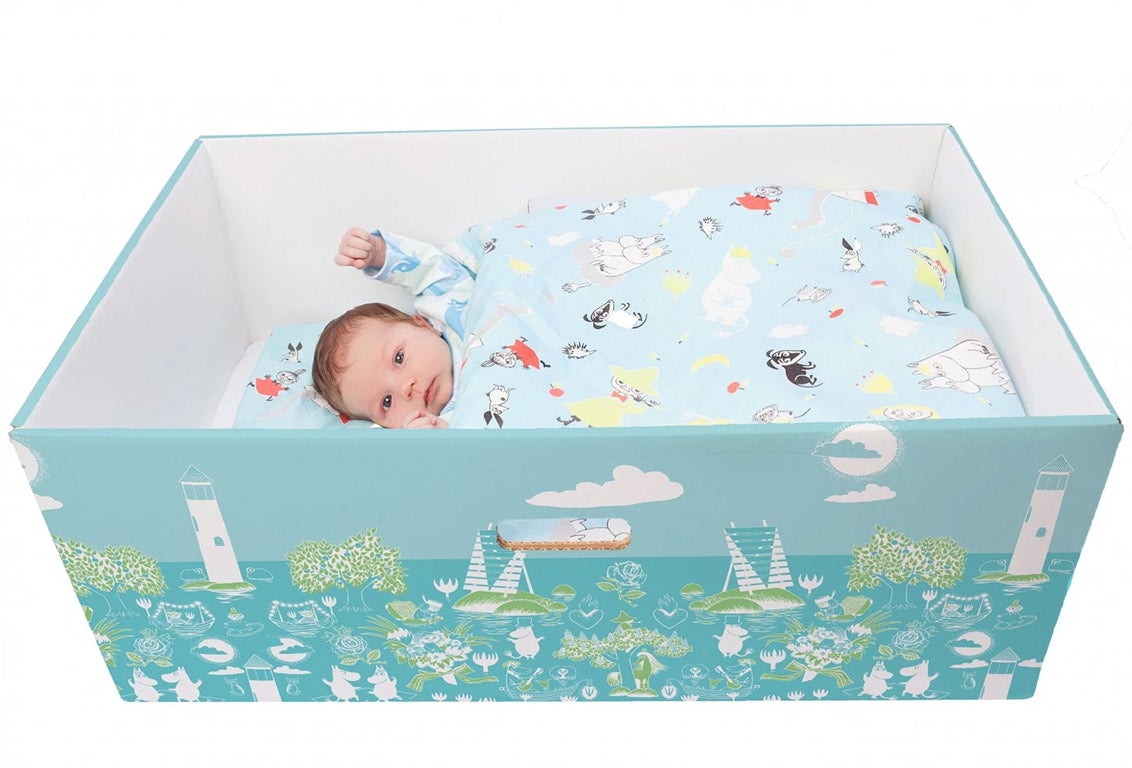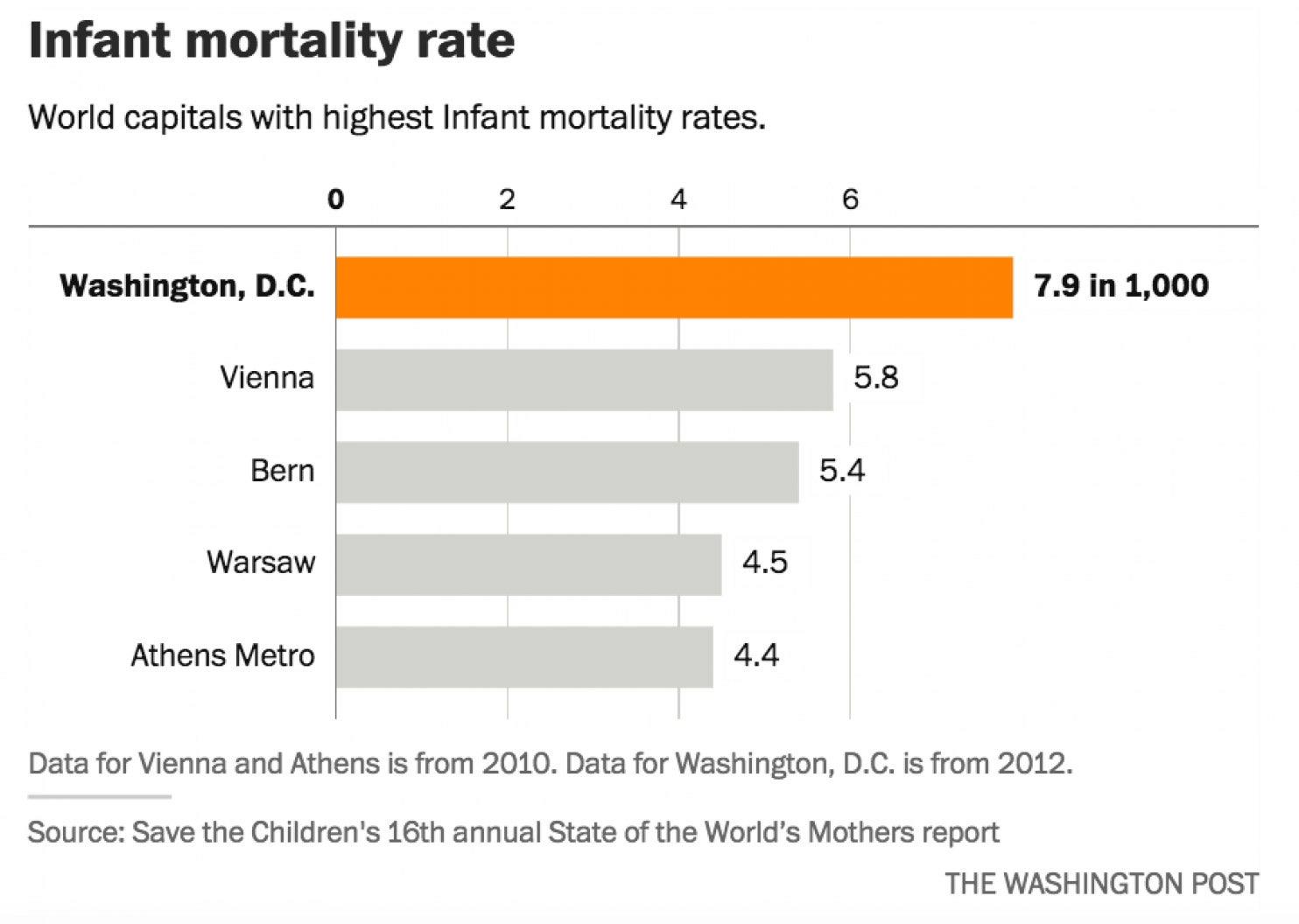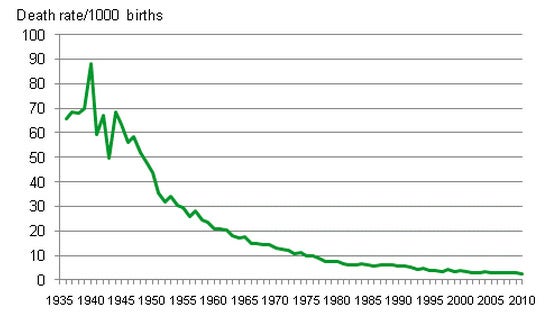Two charts which explain why babies should sleep in cardboard boxes
Finnish experts say the boxes could help save lives

Your support helps us to tell the story
From reproductive rights to climate change to Big Tech, The Independent is on the ground when the story is developing. Whether it's investigating the financials of Elon Musk's pro-Trump PAC or producing our latest documentary, 'The A Word', which shines a light on the American women fighting for reproductive rights, we know how important it is to parse out the facts from the messaging.
At such a critical moment in US history, we need reporters on the ground. Your donation allows us to keep sending journalists to speak to both sides of the story.
The Independent is trusted by Americans across the entire political spectrum. And unlike many other quality news outlets, we choose not to lock Americans out of our reporting and analysis with paywalls. We believe quality journalism should be available to everyone, paid for by those who can afford it.
Your support makes all the difference.In Finland, many babies sleep in cardboard boxes. And they enjoy it — at least that is what their parents say.
The tradition might seem strange to most American parents. But Finnish experts say it could help save lives.
They also say it could help the United States lower its infant mortality rate in the same way that it helped Finland. The District, for example, has the highest infant mortality risk among all of the world's high-income capitals.

In other countries, such as South Africa, Zambia, Colombia, Argentina, and the U.S., projects are already being set up to imitate the Finnish success story, according to Harvard University doctoral student Karima Ladhani, who recently founded an nongovernmental organization to create a box for South Asian mothers, called the "Barakat Bundle."
Could cardboard baby boxes save lives in other countries?
Ladhani thinks the answer is yes. "I don't think there are geographic boundaries to the impact. But design is incredibly crucial to ensure that it addresses the needs and wants of different populations," she said.
Using a box that is similar to Finnish baby boxes, the project hopes to save up to 58,000 infant lives in the coming five years. The nonprofit's only condition is that mothers who receive the "Barakat Bundle" agree to a prenatal medical examination — the same condition that was in place in Finland in the early 20th century. This measure could save the lives of at least 3,000 mothers in the coming years, according to the organization. The bundles will either be distributed for free or sold at an affordable price.
The original Finnish baby boxes, which the government pays for, are more than just cardboard boxes. They contain a variety of items that new parents need in Finland, such as snowsuits, hats, bodysuits and a sleeping bag, among other things.
The impact of baby boxes in Finland
Originally created in 1938, the free boxes were supposed to benefit low-income families and help decrease high rates of infant mortality. Within a few years, the Finnish government noticed an improvement in children's health.

When the baby box was introduced, nearly 10 percent of all Finnish children died before reaching their first birthday. Today, that number has fallen to 0.3 percent. So, why does Finland still need baby boxes?
When Heikki Tiittanen received a baby box after the birth of his first child in 2010, the Finnish dad had an eye-opening experience. The moment when he opened the box and looked at all the baby items on our living room floor was when he "truly understood that we will have a baby soon and that I will become a father," Tiittanen said. Hoping to share his experience with fathers all over the world, Tiittanen founded a company to export the idea.

"I was actually surprised how well the box worked as a bed. It looked super cute next to our own bed but still used very little space in our bedroom, and most importantly our children slept very well in the box," Tiittanen, who now has three children, said in an e-mail. "Maybe the biggest advantage of the box was that we were able to comfort the baby during the night without getting up from the bed, as the box was placed on the floor next to our bed."
Global demand grows
Finnish babies sleep in boxes for the first three to four months. "Our rule of thumb would be that it’s time to move on from the box when the baby drums to the walls of the box so that parents are not able to sleep anymore," Tiittanen explained.
Even after his babies had grown up, the box proved to be an advantage: Tiittanen turned it into a toy car.
Since last October, the number of countries baby boxes are exported to has risen sharply.
"Many expecting parents are living quite busy lives, meaning that they have less time to prepare for the baby," Tiittanen said. "The idea of getting a starter kit including many of the things that need to be taken care of before the baby is born is something people seem to be interested in."
The United States is among the countries where baby boxes are finding an increasing number of fans. One American customer wrote on the company'sWeb site: "It might be fun for aunts and uncles to choose between which kind of cute animal to have on baby socks, but if you're a new parent, it's a relief to have someone else just say, 'here's a bunch of stuff you'll probably need' so you can move on to more important decisions."
Unlike its role model, however, Tiittanen's baby boxes are part of a lucrative business. His baby boxes are sold and exported to those who can afford them and will most likely fail to reach those who need them most.
Why developing nations could benefit most
That is the gap Ladhani is trying to narrow with the "Barakat Bundle." Of course, the box's content has evolved since its early days in Finland.
In South Asia, the boxes now include low-cost infant caps and crucial information on breastfeeding, for instance. Although mothers were already able to purchase such items, the box brings them together for the first time, according to its founder.
"The box is more than just a package of items; it captures something intangible about motherhood and the aspirations that come with the birth of a new baby," Ladhani said.
"We capture that intangible feeling in a product that is specifically tailored to the culture, context and needs of South Asian families."
Washington Post
Join our commenting forum
Join thought-provoking conversations, follow other Independent readers and see their replies
Comments